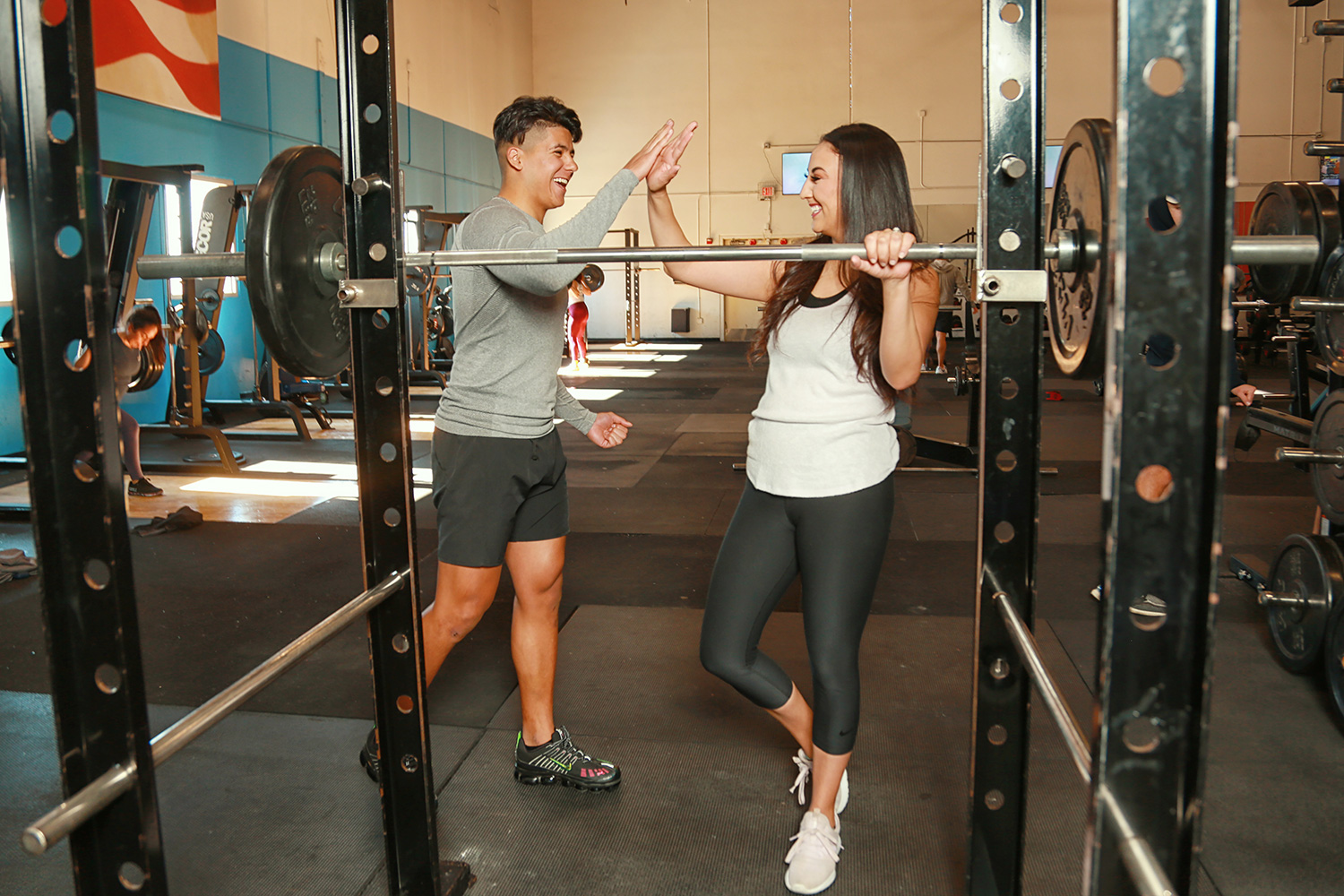
Exercise is an essential part of a healthy lifestyle, and a weekly workout plan or schedule can be a great way to stay on track and help you reach your fitness goals. Exercise also has many benefits for overall health and wellness.
When you create a weekly workout routine, you can design a plan that provides structure and helps you stay motivated and consistent. Having a plan lets you set realistic goals and keep track of your progress, allowing you to see how far you’ve come and where you want to go. Not only does a routine help you reach your goals, but it’ll also keep you from overworking yourself and prevent burnout and fatigue. Wondering how to create a workout routine tailored to your goals? Follow along!
How to Create a Weekly Workout Plan
When exercise provides an array of benefits, from improving sleep1 and cognitive performance to boosting your mood2, it’s no surprise you’d want to add it to your routine. But where do you start? Creating a workout plan is the best way to follow a structured guideline to get you to your goals, whether that’s running a 5k marathon or building muscle mass and toning up.
Setting Goals
Setting goals is a great way to ensure you are making progress in your fitness journey. Before creating or beginning your workout plan, it is important to establish clear and realistic fitness goals. Ask yourself what your overall goal is. Is it to lose weight? Build muscle? Increase endurance? This will help you create an actionable plan and decide what types of exercises you want to include in your workout routine.
Finding Exercises that Work for You
Finding the right exercises that work for you is one of the most important steps in creating your workout plan. Depending on your goals, some forms of exercise may work better than others. Consider what kind of activities and exercises you like to do, and make sure that these activities fit into your overall plan.
If your goal is to lose weight, cardio and aerobic exercises like walking, jogging, or swimming are all great options. If you want to build muscle and strength, you’ll probably want to include weight lifting or bodyweight exercises. If you’re looking to lose weight and build muscle, then consider combining a few different forms of exercise into your routine.
If you’re just starting out your fitness journey, be sure to focus on workouts for beginners to start out steady and build your way up.
Creating a Schedule
Once you’ve set your goals and decided what types of exercises you want to include in your weekly workout routine, it’s time to create the actual schedule.
Start by evaluating your overall schedule—this includes work, school, family time, etc—and make a list of the days you will dedicate to exercising. Once you’ve set your days, decide how long each workout will be. Remember that it doesn’t always need to be a long or intense workout session every day—something is better than nothing!
Now that you have your schedule set and picked out your exercise, it’s time to decide how these exercises will be split up between the set days. For example, you might want to dedicate one day to cardio and the next to strength training. Ultimately, it’s about what works best for you.
Try to mix up your exercises as much as possible to keep things fresh and keep you from getting bored. Also, consider varying the intensity of your workouts on alternating days. This can help prevent injuries and give your body time to recover.
Finally, don’t forget to factor in rest days. Your body needs time to recover and recharge, so make sure to include some days off from working out.
Example Weekly Workout Plan
Every routine will be different for each person according to their needs, abilities, current fitness, level, and goals. If you’re looking for more guidance in creating a weekly workout schedule, here’s what yours can look like:
Monday/Day 1:
This day can consist of a warm-up, 30 minutes of cardio or aerobic exercises like walking, jogging, swimming, etc., and a cool down and stretch.
Tuesday/Day 2:
This can consist of working out upper body and core muscles. Upper body exercises include bicep curls, dumbbell bench press, tricep dips, chest press, overhead press, and planks. Exercises to work out your core muscles can include bicycle crunches, dead bugs, Russian twists, side planks, and mountain climbers.
Wednesday/Day 3:
Day 3 can be focused on working out the lower body. These exercises will mainly focus on the glutes, quads, and hamstrings, but some can also work out your abs and upper body muscles. Exercises to include for lower body are squats, leg presses, hip thrusts, lunges, and deadlifts. There are many variations to some of these exercises, like regular squats vs Bulgarian split squats or using your body weight vs a dumbbell or a weight machine.
Thursday/Day 4:
You’ll most likely want this day in your workout program to be a rest day for your muscles to recover and to avoid injury.
Friday/Day 5:
This day can focus on a low-impact activity such as yoga, pilates, barre, or even swimming. This can slowly help your muscles get back to working out after a rest day.
Remember, this is just one way to set up your workout plan. You can create changes wherever you see fit, and however it aligns with your goals. Once you’ve decided on the schedule that works best for you, you’re ready to get in the gym and begin your journey!
Time to Create Your Workout Plan
Creating a weekly workout plan doesn’t have to be complicated or intimidating. With a little bit of planning, you can create a schedule that’s right just for you and helps you reach your goals. So take some time to create your own workout plan, then commit to making it happen!
Not sure where to start? We’re here to help. With our supportive community and knowledgeable trainers at Chuze Fitness, we can help you create a workout plan that’ll be effective in helping you improve and reach your goals. Our fitness classes are also a great way to stay active with a community. Find a location near you to get started.
Source:
Sleep Medicine. Effects of moderate aerobic exercise training on chronic primary insomnia. https://pubmed.ncbi.nlm.nih.gov/22019457/
Primary Care Companion to the Journal of Clinical Psychiatry. The Benefits of Exercise for the Clinically Depressed. https://www.ncbi.nlm.nih.gov/pmc/articles/PMC474733/
Health. This Personal Trainer-Approved Weekly Workout Schedule Balances Strength, Cardio, and Rest Days. https://www.health.com/fitness/workout-schedule
Shape. Here’s What a Perfectly Balanced Weekly Workout Schedule Looks Like. https://www.shape.com/fitness/training-plans/perfectly-balanced-week-workouts

Ani is the Vice President of Fitness at Chuze Fitness and oversees the group fitness and team training departments. She’s had a 25+ year career in club management, personal training, group exercise and instructor training. Ani lives with her husband and son in San Diego, CA and loves hot yoga, snowboarding and all things wellness.
Credit : Source Post





